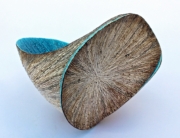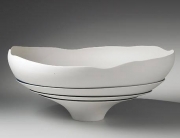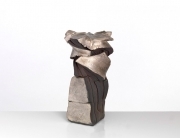Those who regularly follow art headlines have probably seen now that Michikawa Shozo had been attending an ArtCeram exhibition in April. While this is certainly big news for those who are familiar with Michikawa’s work, those who might not be as familiar with it may not realize just why this is so important. Regardless, it’s really nice to see an artist like this make ceramic work so accessible to European audiences.
Back in 2008 Michikawa’s work was exhibited at the Clara Scremini Gallery in Paris, and it’s also been seen at the Galerie Besson in both France and the United Kingdom. He was originally born in Hokkaido in 1953 and graduated from Aoyama Gakuin University in 1975. He ended up focusing primarily on ceramic work in places like Aichi and Seto, though his work has been seen worldwide.
In fact, as well as Japan he’s been viewed quite often in the United States, the Philippines and in Mongolia. Michikawa is something of an international celebrity when it comes to ceramic art fans. That being said, he’s been rather approachable in spite of all this.
For instance, he held workshops at the Technical University of Philippines and at the Mongolia Art College, which allowed people to get closer to his art than they otherwise would have been able to. That’s pretty impressive when it comes down to it.
Perhaps the most impressive aspect is the wide variety of different styles that he works with. Beni kohiki, kohiki, tanka, two types of ash glazes and iron mat glazes are all media that the artist has worked with. For that matter, he’s also been involved with making a variety of different types of objects too.
He’s put incense burners, vases, bowls, tea bowls, lids and mizusashi on display. In fact, these were all placed on display at a single solo exhibition in China back in July 2005. The artist has become well known for his eclectic work, but hasn’t made himself into a jack-of-all-trades. He still works with skillful ceramic processes regardless of what it is that he’s making.
Judging by how he describes his work it could be suggested that the artist finds shaping clay to be a spiritual process. Few things cleanse the soul as much as creating something from nothing, but observing the work in question might help those who aren’t creators in their own right to adopt some of Michikawa’s outlook.





